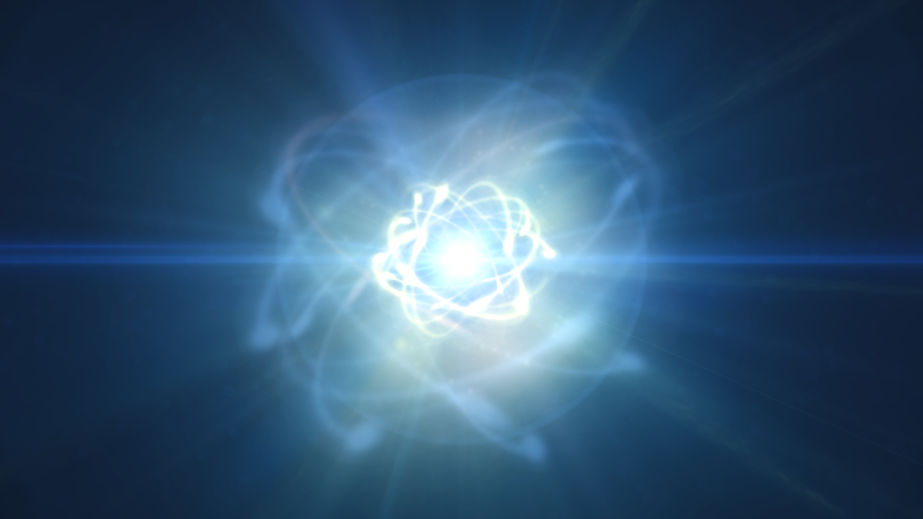It seems like yesterday I was walking past Albert Einstein on the streets of Princeton New Jersey. We nodded as usual. I was a student at the University there. This one particular day Dr. Einstein was interviewed in the our student newspaper about the forthcoming wonders of nuclear fusion energy. He predicted that its grand benefits would arrive in about 50 years. Unfortunately 50 years later, after his passing, most physicists still predicted that it was yet 50 years into the future. Sadly it still is, in fact, it is time to essentially give up on it. In deference to Einstein, in the mid 1950s we had yet to learn through experimentation about the huge obstacles that we now recognize. While 100s of billions of dollars have been spent in the effort to prove Einstein correct, success is unlikely.
In all nuclear reactors operating since the 1950s, atoms are split in half to produce energy called nuclear fission. Nuclear fusion however requires two hydrogen isotopes to fuse leaving excess energy to be harnessed.
Our sun is a massive nuclear fusion reactor. It works because it offers a tremendous gravitational force to hold the radioactive gases within, while they bombard each other in attempts to overcome the huge electrostatic repulsion resulting from identical positive charges. Only when they overcome this repulsion does the fusion occur that gives off excess energy. The 100 million degrees required, has nearly been duplicated on earth but the gravity required has not.
Only a tiny amount of fusion energy has ever been produced. This occurred in a donut shaped magnetic fusion container, called a tokamak, in Czern, Switzerland, years ago. The energy required to produce it was vastly greater. More than a dozen experiments are going on now around the world. The largest Tokamak in the world is in Oxfordshire, UK but the best funded has been ongoing for many years at the International Thermonuclear Experimental Reactor (ITER) at Saint Paul-lez-Durance, France funded by the US, Russia, China, Japan, the European Union, South Korea and India.
Daniel Jassby, writing in The bulletin.org on April 19, 2017 said after working on nuclear fusion experiments for 25 years at the Princeton Plasma Physics Lab “I began to look at the fusion enterprise more dispassionately in my retirement , concluding that a fusion reactor would be far from perfect, and in some ways close to the opposite.”
The real problem is attempting to scale down the sun which burns hydrogen at enormous density and temperature, sustained with unlimited time, benign reaction products, primarily helium. On earth we have none of these conditions so we must use heavier neutron rich isotopes of hydrogen which are deuterium and tritium. While the former is readily available in sea water, the latter is not found in nature and must be manufactured in a nuclear reactor.
The proponents of fusion reactors believe that their byproducts are totally harmless. Earthbound fusion reactors that must burn neutron rich isotopes have byproducts that in Jassby’s words are “anything but harmless”. The neutron stream generated in a fusion reactor leads to four problems including, radiation damage to structures, radioactive waste, the need for biological shielding and surprisingly the potential for creating weapons grade plutonium. These reactors would also share many of the problems that have plagued fission reactors including large coolant demand, high operating costs, and unavoidable on-site power demands that reduce the output of power made for sale.
In magnetic confinement fusion, the only practical solution available so far, are electric and magnetic fields used to control the hot fusion fuel that becomes a difficult to control form known as “plasma”. Inertial confinement in a circular tunnel requires laser beams to squeeze and heat the plasma, (ultimately 120 million degrees is needed).
While we can obtain energy by fusing two deuterium radioactive isotopes of water readily found in sea water, their reactivity is 20 times less than if we fuse one deuterium isotope with one tritium isotope of water. Tritium, has a half life of only 12.3 years. Once created in nature, it is relatively quickly gone. Therefore we must create a reliable supply of tritium in our old reliable fission reactors. Of course, a primary reason for support of fusion is to get rid of fission reactors for their perceived safety problems. We say perceived as we can now build fission rectors, far advanced from those of the past, which are inherently safe. But that is a story for another day.
Those who promote fusion have closed their eyes to the problems that exist. Since no one has yet been able to create a measurable amount of energy from nuclear fusion, their problems can be ignored. Nuclear fusion will remain 50 years away for the foreseeable future.
